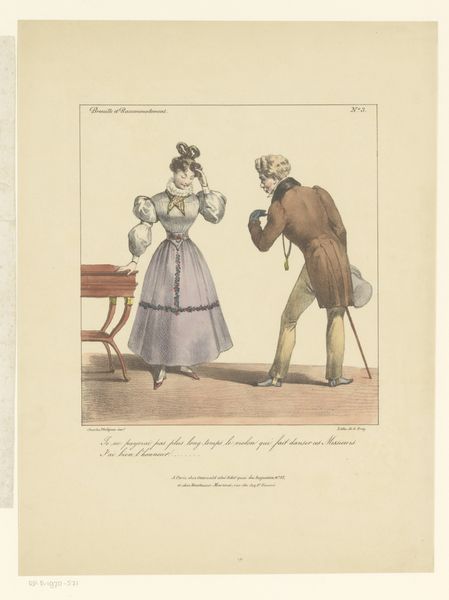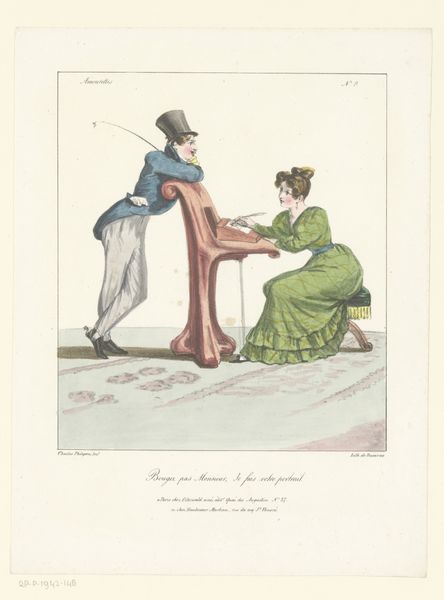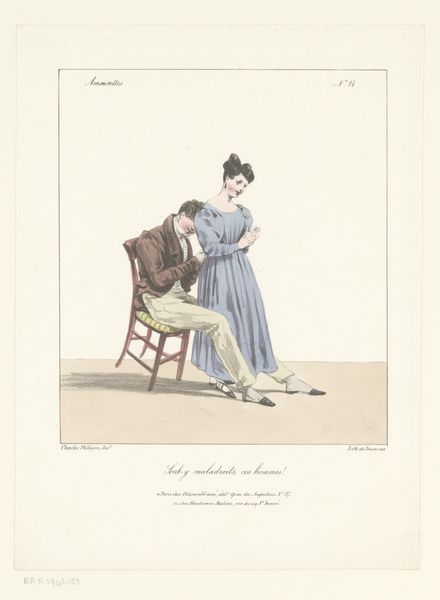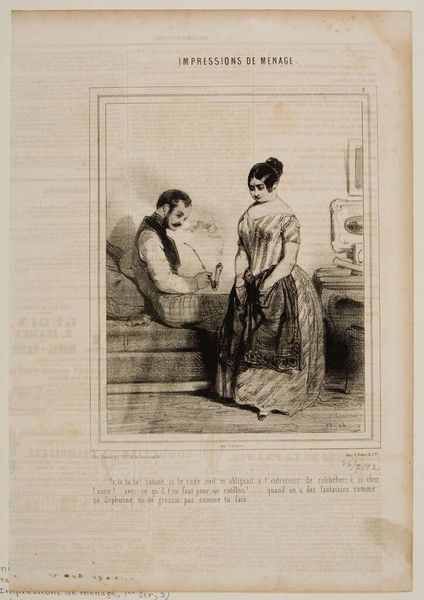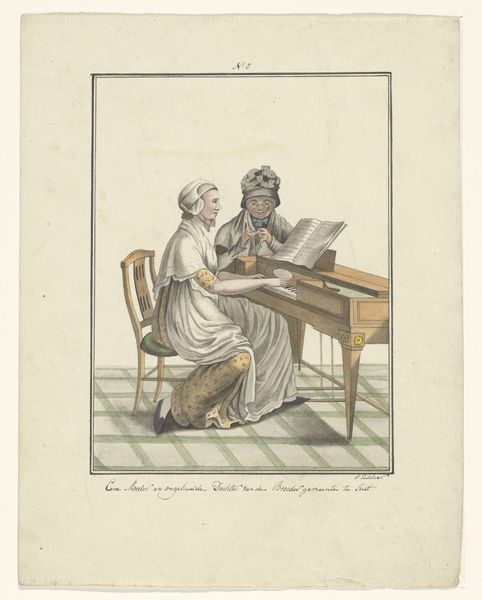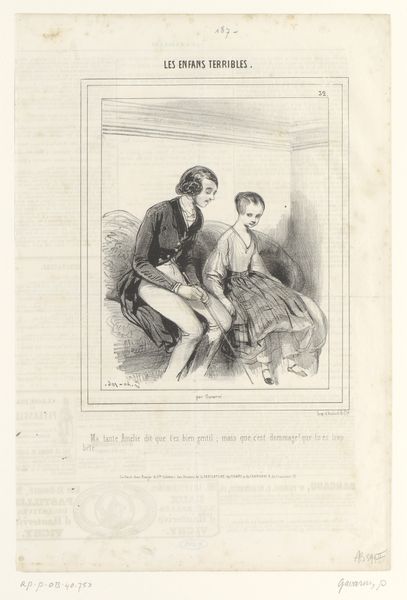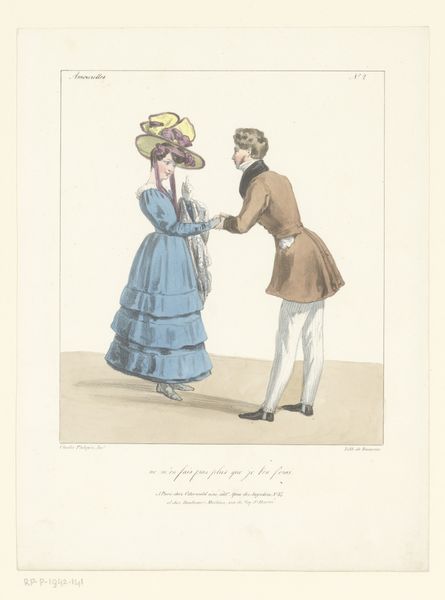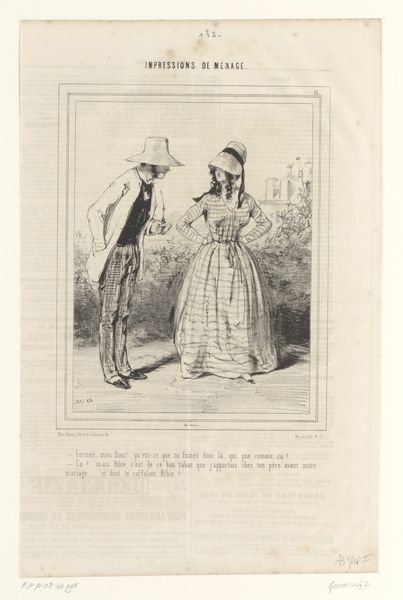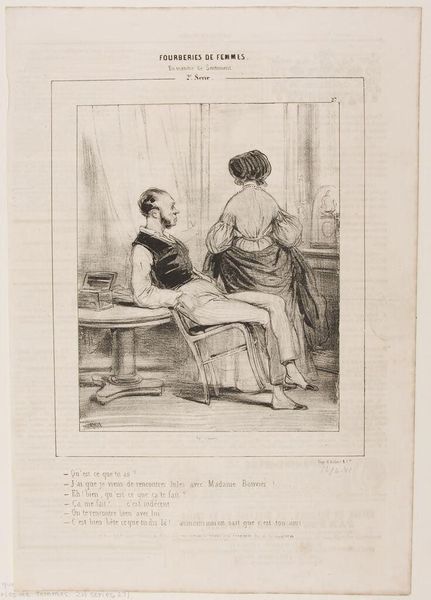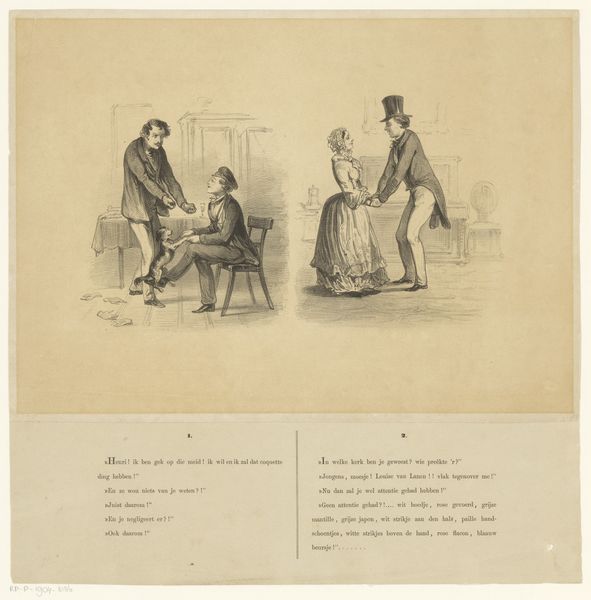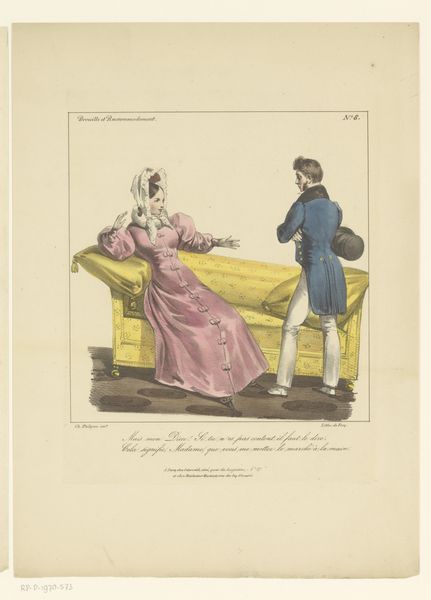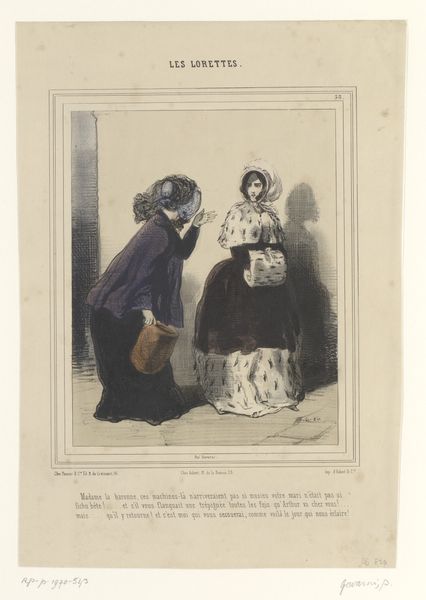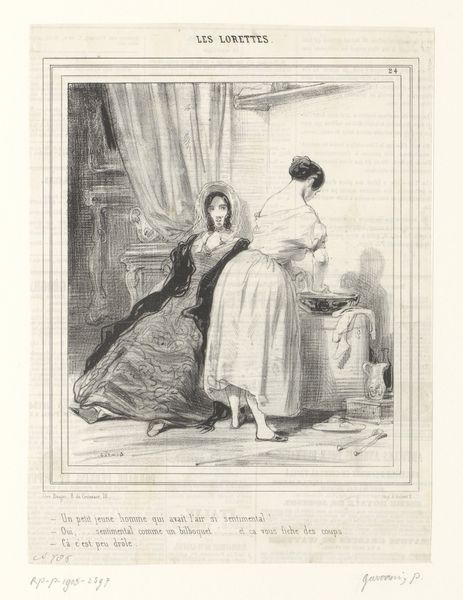
Vrouw eist van man dat hij met iemand het contact verbreekt 1828 - 1830
0:00
0:00
charlesphilipon
Rijksmuseum
painting, watercolor
#
painting
#
watercolor
#
romanticism
#
watercolour illustration
#
genre-painting
Dimensions: height 349 mm, width 260 mm
Copyright: Rijks Museum: Open Domain
Editor: This watercolour painting by Charles Philipon, titled "Vrouw eist van man dat hij met iemand het contact verbreekt," dating back to around 1828-1830, captures an intriguing domestic scene. I’m really struck by the power dynamic implied by the woman’s pose. What social commentary do you think Philipon is making? Curator: Philipon places the personal squarely in the political. Beyond a simple marital spat, we need to consider this image within the burgeoning discourse on women’s rights during the Romantic era. Consider the woman’s upright posture versus the man’s seated position, or her elaborate clothing against his relatively subdued attire. What do these choices tell us? Editor: It’s like she’s the visual and moral center, isn't it? Maybe Philipon is commenting on how women held men accountable to standards in courtship? Curator: Precisely! And look closely at her hand gesture—demanding, but also, perhaps, pleading? Remember, such interactions often played out under a patriarchal structure, even within intimate spaces. How might societal expectations of marriage and female obedience influence our understanding of this scene? Is this assertiveness an act of defiance? Editor: I hadn't considered the limitations placed on women during that period. Her stance definitely reads differently knowing the wider context. Curator: Exactly. Genre paintings can reveal complex social narratives if we are willing to read them through a contemporary lens. What was previously interpreted as merely 'domestic' becomes charged with tensions of gender, power and class, revealing societal norms, expectations, and the push for individual freedom. Editor: I see it now. So, reading art is like deciphering coded messages from the past about historical realities and cultural power. Curator: Indeed, by connecting artistic representation to lived experience, we begin to expose the nuances and the tensions within social dynamics. Editor: This was super helpful! Thank you for the context.
Comments
No comments
Be the first to comment and join the conversation on the ultimate creative platform.
